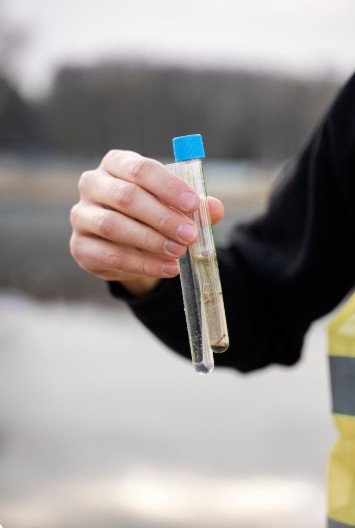Helium Leak Detector That Spots the Invisible Fast
Helium Leak Detector for Unmatched Accuracy
Basic Information
In high-stakes industries where precision and performance are non-negotiable, detecting even the smallest leaks can make a monumental difference. From aerospace to pharmaceuticals, the integrity of sealed systems plays a pivotal role in ensuring safety, efficiency, and compliance. That's where a helium leak detector becomes an indispensable tool—offering unmatched sensitivity and reliability in spotting leaks that are invisible to the naked eye.
The Science Behind Helium Leak Detection
Helium, being an inert and non-toxic gas with small atomic size, is the ideal tracer gas for leak detection. When introduced into a pressurized system, helium escapes through the tiniest of leaks and is easily identified by specialized detectors. These instruments use mass spectrometry or vacuum technology to detect helium presence, allowing technicians to pinpoint the exact location and severity of the leak.
The sensitivity of a helium leak detector can reach parts-per-billion (ppb) levels, far surpassing traditional methods like soap bubble testing or ultrasonic sensors. This makes it the preferred solution in environments where failure is not an option.
Why Helium? Unique Advantages for Leak Testing
Several characteristics make helium particularly suitable for precision leak detection:
- Inert and Safe: Helium is non-reactive, non-flammable, and poses no risk of corrosion or contamination to sensitive equipment.
- Tiny Atomic Size: Its small size enables it to pass through microscopic holes that other gases cannot.
- Low Atmospheric Concentration: Naturally present in minimal amounts in the atmosphere, helium provides a clean background for accurate detection.
Given these advantages, helium detection is now deeply integrated into modern industrial vacuum solutions, helping maintain the integrity of vacuum systems, sealed components, and gas-filled containers.
Applications Across Critical Industries
The use of helium leak detection extends across multiple sectors where system integrity is paramount:
- Semiconductor Manufacturing
In semiconductor fabrication, even the smallest leak can compromise production quality. Helium testing ensures the purity of cleanroom environments and the functionality of intricate machinery.
- Aerospace and Defense
Aircraft cabins, fuel systems, and hydraulic assemblies rely on absolute precision. A helium leak detector enables rapid identification of potential failures before they escalate into major issues.
- Pharmaceutical and Medical Devices
Sterile packaging, IV bags, and medical instruments must remain airtight. Helium testing is commonly used for final product validation in clean environments.
- HVAC and Refrigeration
Refrigerants are not only expensive but environmentally sensitive. Detecting and sealing leaks using helium helps improve system performance and reduce ecological impact.
- Power Generation
In nuclear and conventional power plants, helium detectors are used to verify the integrity of heat exchangers, turbines, and vacuum chambers—ensuring operational safety and efficiency.
Types of Helium Leak Detectors
Helium leak detection systems are generally classified into two types:
- Sniffer Mode Detectors
These are used in pressurized systems where helium is introduced, and a handheld probe "sniffs" for leaks from the outside. Ideal for large systems and field applications.
- Vacuum Mode Detectors
Used when the component is placed in a vacuum chamber and helium is sprayed over its surface. This method provides higher sensitivity and is preferred for laboratory and manufacturing settings.
When choosing among industrial vacuum solutions, it's crucial to match the detection method with the specific application requirements for best results.
Operational Best Practices
For accurate and repeatable results, proper handling and calibration are essential:
- Pre-Test Preparation: Ensure the system is clean, dry, and free from background helium contamination.
- Calibration: Regularly calibrate the detector using certified helium leak standards.
- Test Conditions: Maintain stable environmental conditions, especially in vacuum mode testing, to reduce signal noise.
Adhering to these best practices not only increases the reliability of results but also extends the lifespan of sensitive equipment.
Frequently Asked Questions (FAQ)
Q1: How small of a leak can a helium detector identify?
Modern systems can detect leaks as small as 10⁻¹² atm-cc/sec, making them suitable for extremely sensitive applications.
Q2: Is helium testing environmentally friendly?
Yes. Helium is a non-toxic, non-reactive gas. However, it is a finite resource, so systems often use recovery or recycling methods.
Q3: Can helium leak detectors be used in portable settings?
Absolutely. Many handheld units are designed for field use, especially in HVAC, automotive, and aerospace sectors.
Q4: How does helium detection compare to other leak testing methods?
Helium detection offers significantly higher sensitivity and faster identification compared to water immersion, dye penetrants, or ultrasonic testing.
Q5: Is it safe to perform helium testing near sensitive electronics?
Yes. Since helium is inert and non-conductive, it does not interfere with electronic equipment or sensitive instruments.
Conclusion
A helium leak detector offers a fast, non-destructive, and ultra-sensitive method to spot leaks in systems where precision is non-negotiable. As part of a comprehensive approach to industrial vacuum solutions, it ensures both safety and operational efficiency across critical sectors. In an era where performance and compliance are tightly linked, the ability to detect the invisible—quickly and reliably—makes helium detection a cornerstone of modern industrial diagnostics.


